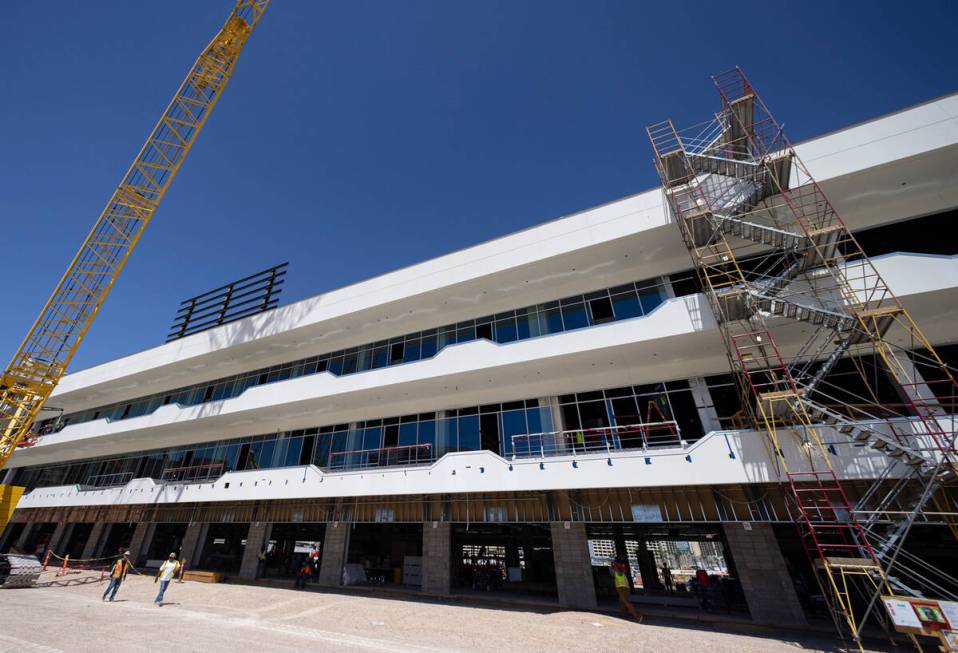How often will the Las Vegas F1 circuit need to be repaved?

Once the ongoing two-phased paving operation — yes, the one causing traffic havoc on the Strip in recent weeks — that is readying the Formula One Las Vegas Grand Prix circuit is complete, another major repave is not expected to be necessary for years.
If all goes as planned, the track being prepped now will last at least six years before another similar operation will need to be completed, according to Terry Miller of Miller Project Management, who is overseeing the paving work.
“This track should last six years, if not eight-10 years,” Miller said. “We do recognize there will be times where we have to go back and make repairs … so we’ve got a protocol process in place (with Clark County) to make sure it goes back to the same as we did it the first time around.”
Clark County and Formula One entered into a recognized the event for at least 10 years, but F1 officials have repeatedly noted they want the race to be a permanent fixture annually on the circuit’s calendar.
F1 and Clark County officials could enter into a public-private partnership Tuesday for which the amount of the roadwork taking place would be paid for with public dollars.
Although an exact amount the cost of repaving the 3.8-mile circuit for the race is not known, the potential ask from F1 could be around $37 million, a figure noted by Steve Hill, Las Vegas Convention and Visitors Authority president and CEO. The track includes portions of public roads on Las Vegas Boulevard, Koval land and Harmon and Sands avenues and private roads in the F1 paddock area and MSG Sphere.
Liberty Media, Formula One’s parent company, is investing $500 million toward the paddock building being constructed at Koval Lane and Harmon Avenue. The race weekend itself, Nov. 16-18, is also expected to generate over $1 billion in revenue for the city.
Weighing those factors, Las Vegas Grand Prix CEO Renee Wilm said she hopes the county will see the benefits of financially assisting the needed infrastructure work.
“We do really appreciate that the county is considering doing a public-private partnership with us,” Wilm said, “Discussions are continuing and we’ll see where they’ll go. But I would say the most important part of our partnership is their willingness to work with us.”
Clark County Commissioners Michael Naft and Jim Gibson previously told the Review-Journal that the county won’t be fiscally irresponsible with any amount of public money put toward the roadwork. They also noted that any amount of money the county contributes will be worth the investment, because of the magnitude of the event.
The first round of paving operations involved crews having to remove the existing asphalt and repave each section. Ten inches of pavement were removed on the Strip ahead of repaving, with 6 inches removed and surfaced on Koval Lane and Harmon and Sands avenues, Miller noted.
“The density of the base is important and the current roadways that have been put down in Clark County certainly don’t meet that criteria and for good reason, it’s an expensive process,” Miller said.
The first round of paving is slated to wrap up toward the end of July, with the final phase starting at the tail end of that. The second phase will occur between mid-July and end just after Labor Day. The final paving phase will bring the circuit up to F1 code to allow for the race to occur.
“It’s a very specific racing surface of an inch-and-three-quarters,” Miller said. “So the centrifugal force that the cars create as they go around the track requires that level of density, not only on the base, but the top layer of the racing surface.”
Contact Mick Akers at makers@reviewjournal.com or 702-387-2920. Follow @mickakers on Twitter. Send questions and comments to roadwarrior@reviewjournal.com.